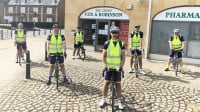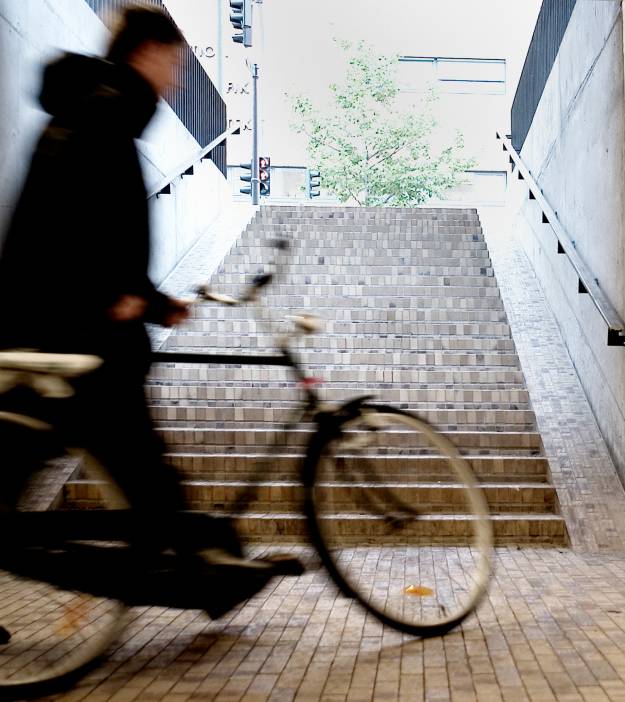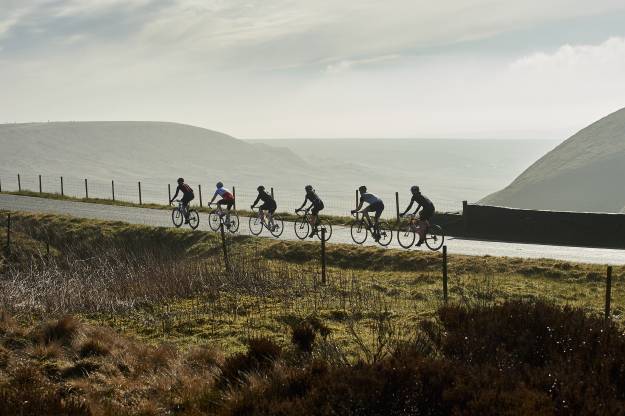Dame Sarah Storey has today urged all road users to respond to the Government’s consultation on changes to the Highway Code, to once and for all clarify the current ambiguity on whether cyclists can ride ‘two abreast’.
Riding two abreast (side-by-side) enables parents to better protect children or more vulnerable riders when riding on the road, and also makes larger groups more compact – and therefore easier for drivers to overtake. Despite this, it continues to be a contentious issue, with many motorists interpreting the current wording in the Highway Code to mean that groups of riders are obliged to ‘single out’ when they wish to overtake.
While the new wording proposed in the consultation has sought to highlight that this is not the case, British Cycling and others believe that it simply adds to the current ambiguity, and the organisation is now asking cyclists to make their voice heard by responding to the consultation before it closes on Tuesday 27 October.
Storey, who is also British Cycling’s Policy Advocate, said:
“The intention of the proposal is to make it clear that riding two abreast is not just legal but it’s also safer and more convenient for all road users – and that includes drivers as well. However, our concern is that the proposed wording doesn’t achieve that goal and the existing ambiguity around this issue remains.
“If you think about a situation where you might be riding with your child, as I do on a regular basis, you want to make sure that you have your child on the left of you so that if somebody is passing too quickly or closely you are offering them some protection. In this situation we don’t believe that a parent should ever feel compelled to ‘single out’.

“Similarly, if you’re out on the road in a group, if you’re in single file there’s a much longer line of cyclists for a driver to pass. On the road it might not be possible to do this safely while maintaining a safe distance from the group, particularly if there’s a bend ahead or a traffic island. If you’re riding two abreast, it makes it much easier for the driver to overtake safely and they’ll also have better visibility of what is coming towards them.
“We know that this issue is a longstanding subject of debate between motorists and people on bikes, with unnecessary hostility often directed to those out cycling, usually in the form of dangerous overtaking. Through the consultation we have the opportunity to clear up the confusion once and for all, and it’s absolutely vital that the Government hears the experiences of thousands of people who would benefit from this change."
British Cycling has worked with colleagues at Cycling UK and other organisations to develop a response which allays these concerns and provides added clarity on how drivers should interact with groups riding two abreast. The changes are summarised below.
Current wording: Rule 66
“You should never ride more than two abreast, and ride in single file on narrow or busy roads and when riding round bends.”
British Cycling proposal: Rule 66
“You should be considerate of the needs of other road users when riding in small or large groups. You can ride two abreast and it is often safer to do so, particularly in larger groups or when accompanying children or less experienced riders. Be aware of drivers behind you, allowing them to overtake (e.g. by moving into single file) when you feel it is safe to let them do so.”
We have also asked for additional clarity to be provided on Rules 154 and 213, as set out in italics below below:
Rule 154
Take extra care on country roads and reduce your speed at approaches to bends, which can be sharper than they appear, and at junctions and turnings, which may be partially hidden. Be prepared for pedestrians, horse riders, cyclists, slow-moving farm vehicles or mud on the road surface. Make sure you can stop within the distance you can see to be clear. You should also reduce your speed where country roads enter villages.
When meeting groups of cyclists riding two abreast, they may choose to move to single file if they deem it safer to do so. They are under no compulsion to do so and it can be safer and easier for you to overtake a compact group, when conditions allow, rather than a longer line of cycles.
Rule 213
Motorcyclists and cyclists may suddenly need to avoid uneven road surfaces and obstacles such as drain covers or oily, wet or icy patches on the road. Give them plenty of room and pay particular attention to any sudden change of direction they may have to make.
Cyclists are advised to ride at least a door’s width or 0.5m from parked cars, for their own safety. Whenever they feel it is safer to do so, for example, on narrow sections of road, at junctions and in slower-moving traffic, cyclists are also advised to ride in the centre of the lane (rather than towards the side of the road), while groups are advised to cycle two abreast in these and other situations. Allow them to do so for their own safety, as this helps them ensure they can see, be seen, and avoid being overtaken where this could be dangerous.
Earlier this week British Cycling Policy Adviser, Chris Boardman, set out the other changes which the organisation is pushing for, including a hierarchy of road users, clarity of junction priority and revised wording on safe overtaking. You can read more about that here, and read British Cycling’s full consultation response here.













